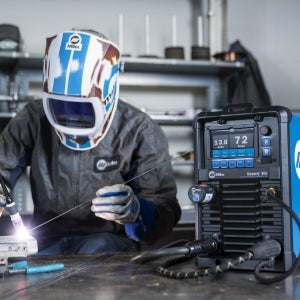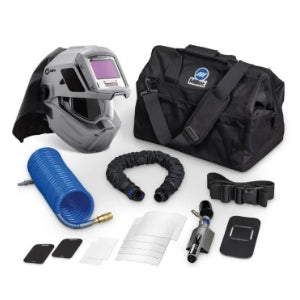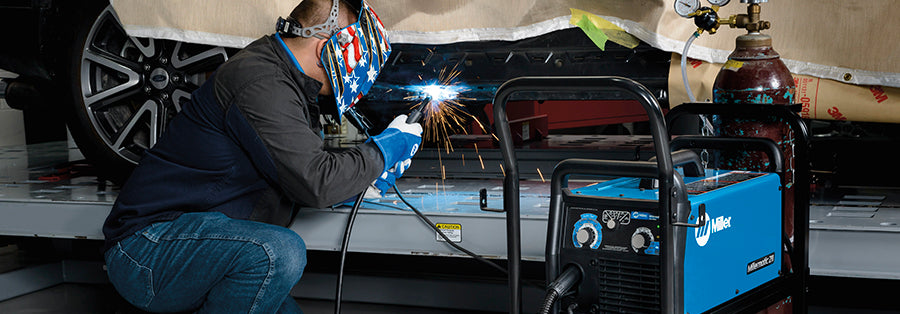As one of the most beloved MIG machines ever created, the Millermatic 211 has made itself a lasting legacy within the welding community ― so much so that many people often wonder about the history of the Millermatic 211 and where it is manufactured. This article will answer those curiosities, giving you the complete backstory behind one of welding’s best machines.
In A Little Town…
During WW1, metal had become the deciding factor on the battlefield. After the war ended, iron and steel didn’t disappear but continued to become an integral part of everyday life. At the same time, welding was on the verge of its own revolution. In 1929, a man in a rural Wisconsin town was tinkering in his basement. Using scrap metal and recycled materials, Niels Miller created a small arc welder that was lighter and more affordable than any other existing option at the time.
Fast forward almost 80 years ― Miller had continued to be at the forefront of innovative welding equipment, especially when it came to machines for everyday consumers. MIG welding was just as popular of a process then as it is today, but few machines offered an easy user experience. Transformer welders were the most common option at the time. While these were reliable, they were quite heavy.

With inverter electronics becoming a more reliable alternative to transformers, the Millermatic 211 was one of the first machines to start adopting the technology. This allowed it to be one of the lightest machines ever created while still offering a substantial amount of power for welding.
Like many of Miller’s products, it was decided that the Millermatic 211 would be produced near their headquarters in Appleton, Wisconsin. Even a decade later today, the Millermatic 211 continues to be fabricated here in America.
Auto-Set Tech
Besides being a protege of lighter, more portable MIG machines, the Millermatic 211 was also one of the very first machines to utilize auto-set technology. Without auto-set tech, the welder must first identify the material type, thickness and wire type. Then they must use a reference chart to find the suggested wire speed and voltage. Those parameters then have to be fine-tuned using a series of practice welds.

Here’s the truth though: A lot of welders simply don’t bother to do any of that. If they don’t have access to an auto-set machine, welders often tend to guess based on settings that seemed to have worked in the past.
We really can’t blame someone for trying to speed up the setup process. Going with what seemed to work last time can often get you “good enough” results quickly ― at least until you start using different material thicknesses or types. Then suddenly, your welds aren’t as good as they once were and you just aren’t sure what the problem is.
Auto-set takes all that headache away. And the best part is, if you’d prefer to set the voltage and wire speed yourself, switching from auto-set to manual mode is incredibly easy.
Outlet Freedom
A lot of consumer MIG welding machines can only work on a 120V or 240V outlet, not both. Essentially this forces you to choose between power and convenience. The Millermatic 211 was one of the first machines to really perfect MVP™ (multi-voltage plug).

What is MPV? The Millermatic 211 comes with both a 120V and 240V plug. If you only have access to a normal outlet, you can swap in the 120V plug and bam! Bob’s your uncle. If you need more power and have access to a 240V outlet, simply swap the plug and you’re set. It’s an incredibly easy solution that gives you a ton of freedom when it comes to the type of work you want to do.
As one of Miller’s most trusted suppliers, Welding Supplies from IOC is the #1 place to buy your equipment. We offer the best prices and customer service on the web, with thousands of happy customers and glowing reviews. Check out the Millermatic 211 for yourself or see our complete cheat sheet with more details about this beloved welding machine.





